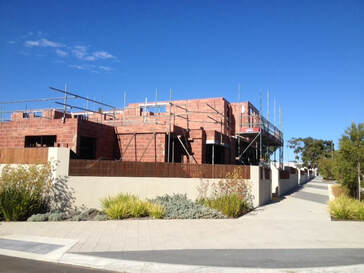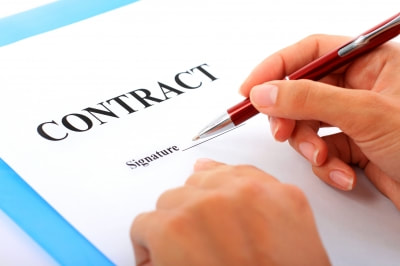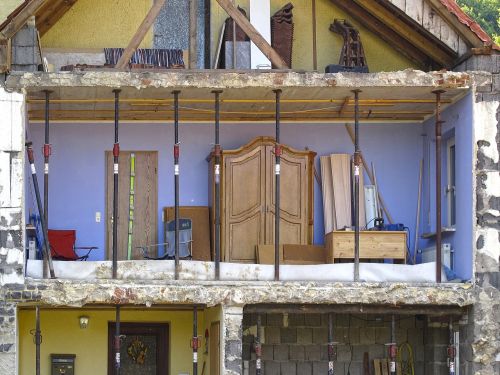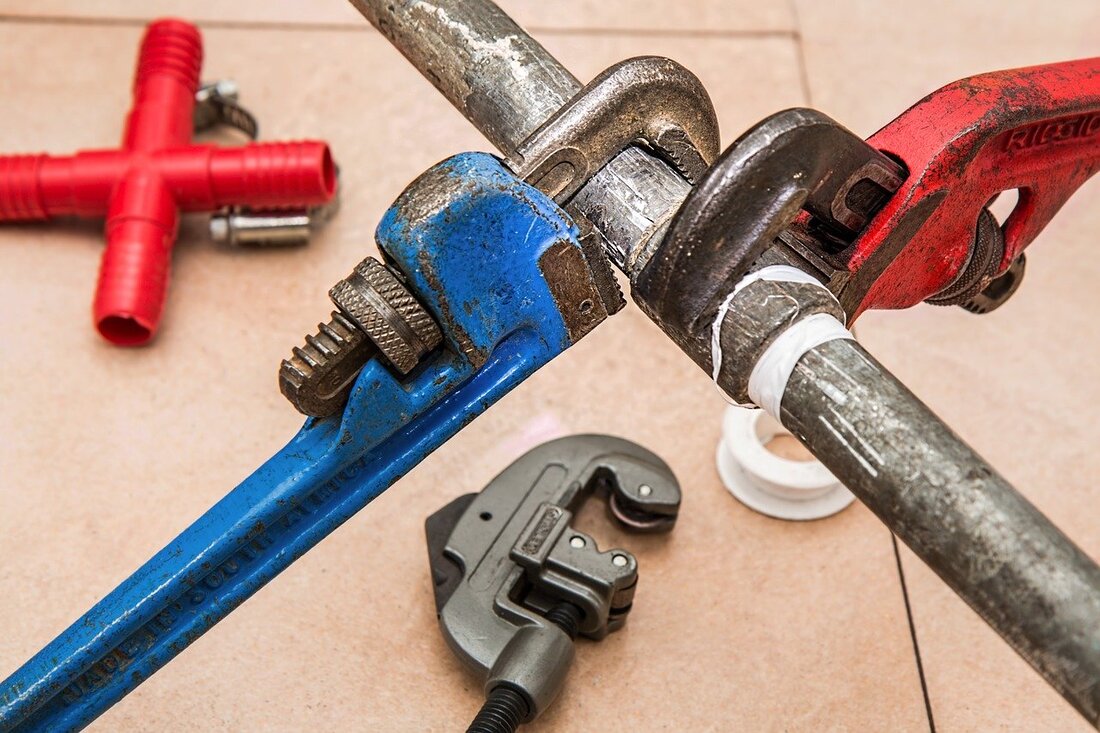|
The contract agreement is a legally binding contract which binds the parties of the agreement together, setting out their obligations and rights. Unfortunately, some agreements are one-sided which offer little protection to one of the parties or places undue risk on them. Contract agreements should be fair, assigning risks to the party that best controls them, while offering protection to both parties should the other party not fulfil their obligations. If this document is poorly worded, inconsistent, or incomplete, you may find that you have little protection should the contractor fail to deliver the project or not meet all their contractual obligations, possibly causing you additional expenses and leading to protracted legal arguments. The contract must be appropriate for the type of work. Construction projects vary, from ones that only have one trade and are worth a few hundred dollars, to contracts to construct the complete house, which could be worth several hundred thousand dollars. Clearly the project worth a few hundred dollars shouldn’t warrant a contract document more than a few paragraphs. While the contract for a complete house is usually a more complex document. The contract can take many forms and it may be a simple one page document, or a weighty, lengthy legal document. However, care should be taken with lengthy documents that there aren’t conflicting clauses, and that the document doesn’t contain so many specifics that by implication what’s not mentioned becomes an exclusion. The contract document normally doesn’t have to be hugely lengthy – less than a dozen pages should suffice. It’s also not necessary to be using extravagant legal language. Simple everyday language is normally sufficient. Terminologies and abbreviations used in the contract documents must be used with consistency and explained in the contract document so there’re no misunderstandings. Contracts must avoid confusing and ambiguous language and there should be no contradictory clauses. For a contract to exist there must be a formal offer which must be accepted in an unequivocal way. Usually acceptance and offer are confirmed by both parties - the contractor and the owner - signing the contract. The contract can be verbal which can be as legally binding as a written agreement, though a verbal agreement is often problematic since it’s difficult to prove what was said and agreed. Stay clear of verbal contracts and be cautious that you do not agree to something verbally. It will be your word against theirs! Next week we discuss what should be included in the contract document.  This is an extract from 'An Introduction to Building and Renovating Houses: Volume 1' written by Paul Netscher. Please like, share and comment. Learn more about renovating and building housesPaul Netscher has written 2 easy to read books 'An Introduction to Building and Renovating Houses - Volumes 1 and 2'. An Introduction to Building and Renovating Houses Volume 1 deals with Hiring Contractors, Managing Construction and Finishing Your Home. and Designing your ideal home Volume 2 deals with Finding Your Ideal Property and Designing Your Dream Home.
("Great for those that DIY. Very helpful in home renovations!" said a Reader on Amazon.com 5*****) These books are available from Amazon and other online bookstores in paper and ebook. © 2020 This article is not to be reproduced for commercial purposes without written permission from the author.
0 Comments
What leads to contractual disputes on home build projects.Frequently home construction projects go wrong and the contractor and the owner engage each other in lengthy and costly legal battles. These may arise because:
What owners must understand about building contractsIt’s essential that:
Please like, share and comment. Learn more about renovating and building housesPaul Netscher has written 2 easy to read books 'An Introduction to Building and Renovating Houses - Volumes 1 and 2'. An Introduction to Building and Renovating Houses Volume 1 deals with Hiring Contractors, Managing Construction and Finishing Your Home. and Designing your ideal home Volume 2 deals with Finding Your Ideal Property and Designing Your Dream Home.
("Great for those that DIY. Very helpful in home renovations!" said a Reader on Amazon.com 5*****) These books are available from Amazon and other online bookstores in paper and ebook. © 2020 This article is not to be reproduced for commercial purposes without written permission from the author. Plumbing and electrical – why it happens in stages when you construct your homePlumbing and electrical installations have to be coordinated with the other trades and contractors, and it usually requires a number of visits from plumbers and electricians. So for instance, these installations could include:
Check plumbing and electrical is complete and sound before next stageIt can be seen that plumbers and electricians may have to return to the project four or more times, and air-conditioning contractors usually two or three times. It’s important to check that all electrical wires and ducts and all plumbing pipes have been installed correctly, at the right location, with no visible leaks and faults, before:
Coordinating the trades during constructionBut even these trades must be coordinated between them. Plumbing waste and sewer pipes have to be installed at the exact locations and levels. They usually have little room to change so they should be installed first. Air-conditioning ducting is usually premade in sections, unless it’s flexible ducting installed for smaller airflow or at the ends of the main ducts. So non-flexible air-conditioning ducts should be installed next. Water pipes can go up or down and there’s some flexibility in location so they’re installed next. Electrical wiring has the most flexibility, so can be installed last. However, having said this, it’s important to note that pipes and ducts can’t obstruct where lights, switches and outlets must go. This is an extract from 'An Introduction to Building and Renovating Houses: Volume 1' from the chapter 'Understanding Building Processes' written by Paul Netscher. Please like, share and comment. Learn more about renovating and building housesPaul Netscher has written 2 easy to read books 'An Introduction to Building and Renovating Houses - Volumes 1 and 2'. An Introduction to Building and Renovating Houses Volume 1 deals with Hiring Contractors, Managing Construction and Finishing Your Home. and Designing your ideal home Volume 2 deals with Finding Your Ideal Property and Designing Your Dream Home.
("Great for those that DIY. Very helpful in home renovations!" said a Reader on Amazon.com 5*****) These books are available from Amazon and other online bookstores in paper and ebook. © 2020 This article is not to be reproduced for commercial purposes without written permission from the author. Renovating a house involves many tasks like breaking the walls, removing windows, opening the roof and allowing contractors into your home. The processes can damage your things and even endanger the lives of your children and pets. Therefore, it is important to take care of your furniture, possessions and parts of the house that should not be impacted by the work. You do not want your renovation and remodeling to create additional unexpected costs. In the process of remodeling, homeowners need to protect their valuables as well as the items they don't want damaged. So, let us explore some ways to keep the home safe and secure in the process of remodeling. 8 steps to protect your home while it is undergoing renovations and remodelingHire a reputable contractor The first step to protect your home during a renovation project is to hire a reputable company for the project. You need to do your research to find reliable and trusted contractors for your renovation project. A company with professionals who can take care of the safety of your home and your stuff while undertaking the tasks involved in remodeling. It might take some time to find the right company, but the time you spend will be worth it. You can ask your friends, colleagues, and neighbours to recommend a reputed remodeling company. Another option is to research online to find the top-rated companies offering services in your area.  Image by GMTechtronics from Pixabay Image by GMTechtronics from Pixabay Maintain the external security Although the internal things in your home can be a complete mess during the project, you need to upgrade and maintain the external security measures. You can install additional security cameras, hire a security person, and check that outside fences and gates are secure. If your outdoors are secure, it means the indoors are also secure to some extent. Store your valuables Holes in walls and open doors can lead to theft of your valuables. However, there are some options that you can use to secure your valuables. You can use a safe to put your valuables and place them at a secure place in your house. Another way to store and secure your valuables is to put them in a locker at your bank. If you have plenty of valuables that cannot be stored in a safe or locker, you should consider renting another house to store the valuables. However, you should also install security devices and use additional measures to keep the safe secure in the rented house. Remove stuff from rooms If you are planning a major renovation, you should shift all your stuff to a rented house or put it in storage. However, if you are going to renovate only some areas, you should shift the stuff to other areas or rooms. Removing things makes it easy for the contractor to work, and also protects the items from potential damage. Educate your children Kids and pets are prone to get harmed during a renovation. Therefore, it is essential to educate the children about safety measures. Tell your children to stay away from the dangerous objects, sharp tools, and electrical tools of the workers. Also, tell them to stay away from paints, and chemicals used by workers in the process. Once your kids know about the precautions they need to take, also educate them on keeping the pets safe from harm during the renovation. Pets have the habit of roaming around the entire house. They are prone to harm while walking around sharp and dangerous tools. Therefore, it is best to restrict them in safe areas or your backyard during the remodeling project. Monitor the access to your home Even if you have hired a reputable renovation company you still should be careful. You should monitor the access to your home and ensure only trusted people have access to your home and that doors are secured when the contractor leaves the site. Communicate the same to the workers of the renovation company. You can install the home security systems that are a set of various devices like cameras, alarms, and motion sensors that monitor your home. Also, these systems have apps that you can install on your phone and receive alerts. Watch the project with cameras Adding cameras to your work-site provides a variety of different ways to protect your property. For example, you'll have on-site videos of anything that happens. Security cameras usually store the video recordings for a few weeks. If something goes missing, you can search he video to see see what happened. The presence of cameras is also a deterrent. You can also watch the video your cameras capture in real-time through a surveillance system. In addition to the obvious deterrent created by surveillance, the ability to view live and captured videos makes installing cameras to view your home during renovations a powerful safety measure. Change your locks Because most of the burglars and thieves enter from the front door, you should ensure that your doors are always secured. Keyless smart locks make it easy to lock and unlock doors whenever you need to. You may also send unique codes to each user so that you know which code has been used to access your home by the workers at the time they work in your home. You can hire a residential locksmith to change the locks in your house. Keep your home safeThese were some tips to keep a home safe and secure in a remodeling project. The key to secure a home during any such project is to hire a trustworthy renovation service with positive customer feedback. Therefore, it is best to check the reviews and feedback before hiring a contractor for your home renovation project. The installation of security devices like cameras and home security systems will be like icing on the cake. Author Bio: Emily Bartels is a content writer at All Coast Locks . She enjoys writing on various topics mainly associated with Home Improvement, Gardening, Technology and Gadgets. Her famous articles are on the topic of Home Improvement , Technology and many more Want to learn more about renovating and building houses?Paul Netscher has written 2 easy to read books 'An Introduction to Building and Renovating Houses - Volumes 1 and 2'. An Introduction to Building and Renovating Houses Volume 1 deals with Hiring Contractors, Managing Construction and Finishing Your Home. and Designing your ideal home Volume 2 deals with Finding Your Ideal Property and Designing Your Dream Home.
("Great for those that DIY. Very helpful in home renovations!" said a Reader on Amazon.com 5*****) These books are available from Amazon and other online bookstores in paper and ebook. Plumbing systems consist of the water pipes which connect from the water supply (usually the town system or utility provider, or from your own source of water such as rainwater tanks or bore) to where it’s required at taps and toilets. Pressure forces water along the pipes – either pressure from the town system, pressure created by a pump from your bore or tank, or your own raised tank. Water pipes must be able to withstand the pressure of the supply system. Water pipes are available in different grades to withstand various pressures. They are usually 12 to 25 millimetres (half to one inch) in diameter and made from various materials including copper, galvanised steel and various plastics. Because water is forced along the pipes under pressure water pipes don’t have to be installed at a specific level and can go up or down. The amount of water you get out of a tap or fitting in your house will depend on:
The water supply pipes must have at least one shutoff valve so that the water can be turned off when repairs are required or there’s a leak. But it’s good practice to install valves within the house, ensuring they’re easily accessible. In more than one instance we’ve had pipes burst flooding the house, and the sooner you can cut the water supply the less water will flood your house. The other component of the plumbing system are the wastewater pipes (sewer pipes) which take wastewater to the town system or your septic tank. These are gravity pipes and must always flow downhill. Drainpipes vary from 40 to 100 millimetres (one and half to four inches) in diameter. Each waste outlet should have a trap, which is a U-shaped pipe which permanently holds water, preventing smelly sewer gases from entering the room. Waste pipes need air to allow the wastewater to move otherwise an air-lock will be created. At the higher end of the system a vent pipe connects to the atmosphere. Since this will release smelly air these vents are usually placed above the roof, although a non- return valve can be fitted which only allows air to enter, while preventing air from escaping. It’s always advisable to use good quality plumbing pipes and fittings. There have been several cases of imported tap fittings leaching lead into the water supply. Of course lead is poisonous. Also I’ve had flexible hoses feeding taps suddenly burst because they were substandard, flooding the house. Generally there are codes which govern plumbing materials, and plumbing design and installation. This is an extract from 'An Introduction to Building and Renovating Houses: Volume 1' from the chapter 'Understanding Building Processes' written by Paul Netscher. Please like, share and comment. Learn more about renovating and building housesPaul Netscher has written 2 easy to read books 'An Introduction to Building and Renovating Houses - Volumes 1 and 2'. An Introduction to Building and Renovating Houses Volume 1 deals with Hiring Contractors, Managing Construction and Finishing Your Home. and Designing your ideal home Volume 2 deals with Finding Your Ideal Property and Designing Your Dream Home.
("Great for those that DIY. Very helpful in home renovations!" said a Reader on Amazon.com 5*****) These books are available from Amazon and other online bookstores in paper and ebook. © 2020 This article is not to be reproduced for commercial purposes without written permission from the author. |
AuthorI’m a construction professional, author of several successful construction management books, and a home owner. I’ve made mistakes in construction management, I’ve seen others make mistakes, but importantly I’ve had multiple successful construction projects and I’ve learned from the mistakes. I want to share these lessons and my knowledge with you. Also available from:
Amazon Au, Amazon DE, Amazon ES, Amazon CA, Amazon IT, Amazon FR, Amazon NL, Amazon India and 'An Introduction to Building Houses - Volume 2 Finding Your Ideal Property and Designing Your Dream Home'
Archives
July 2024
CategoriesWe welcome genuine comments, especially comments that add additional information to the subject matter in the article. We however reserve the right to remove inappropriate comments, which includes comments that have nothing to do with the subject, comments that include inappropriate language, and comments that are an advertisement for a product or company, or which include an advertising link. Comments must be in English. We will not enter into discussion on why a particular comment was removed.
|

















 RSS Feed
RSS Feed


